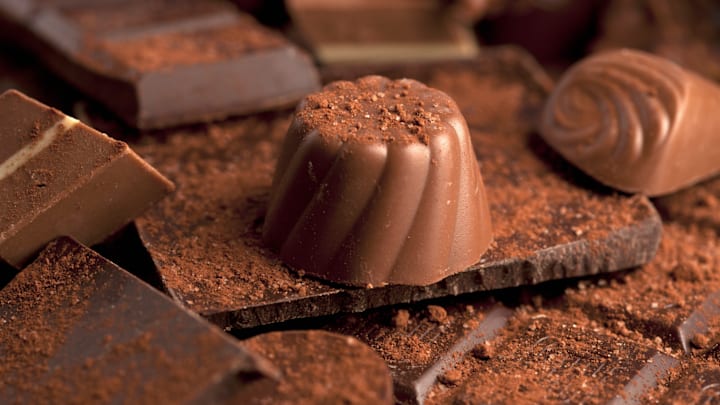If you’re a fan of chocolate, you’ll probably eat pretty much anything, from candy bars to cake to Easter bunnies. The only thing that might give you pause—besides the caloric count—is a white, chalky-looking substance that can sometimes appear on the surface or dark or milk chocolate. What is it, and is it safe to eat?
According to Live Science, the white stuff is the result of what gastronomy experts call “chocolate blooming.” That’s when chocolate begins to exhibit a kind of chemical reaction, with cocoa butter in the chocolate moving fat to the surface (known as “fat bloom”) or chocolate being exposed to moist air and bringing sugar crystals to the surface (known as “sugar bloom”).
When chocolate blooms, the sugar, fat, and cocoa fiber become unstable, causing the chocolate to lose the structure gained during the cooking process. Exposure to heat or light can prompt chocolate to bloom. So can quickly moving it to more humid air, like taking a piece from the refrigerator to the kitchen counter. Either the fat or sugar will manifest on the exterior, leading to the slightly white or gray discoloration.

If you see this happening, it may not be entirely the result of improper handling in your part. The bloom can also appear if chocolate wasn’t properly prepared, either because it wasn’t tempered (temperature-controlled) properly, because it was packaged before being cooled, or if a cool filling was injected.
Chocolate makers are aware that consumers may be put off by the chalky substance, so they sometimes add bloom inhibitors like vegetable oil. They can also use cocoa powder, which contains little cocoa butter.
Blooming may not be visually appealing, but it’s harmless: The chocolate is still perfectly safe to eat, though it might taste a little differently due to the chocolate’s composition being altered.
[h/t Live Science]
